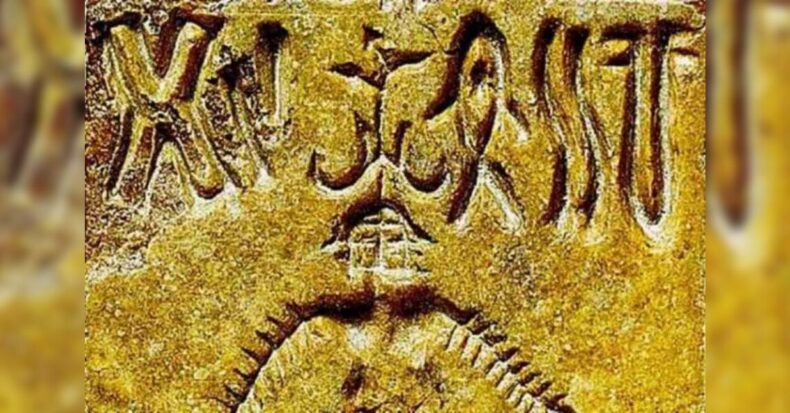Proto-Dravidian was one of the popular tongues spoken by the IVC people.
What language did the people of the Indus Valley Civilisation (IVC) speak? Scholars of history and archaeology have grappled with this question ever since the IVC remnants were excavated for the first time in the mid-19th century.
Since then, even the sharpest brains in linguistics have grappled with the mystery of the language spoken by the IVC people because its script is yet to be deciphered. However, a recently published paper seeks to solve an essential part of this perennial puzzle.
The paper provides crucial evidence suggesting that the proto-Dravidian language, the ancestral language of all significant modern Dravidian languages, was possibly spoken by a substantial population in the IVC.
The paper presented by Ms Bahata Ansumali Mukhopadhyay, a Bangalore-based software developer and independent researcher, was published in a peer-reviewed journal Springer Nature Group earlier in the month.
What the paper says: –
The paper states that as the Harappan script is not yet deciphered, there are no direct ways of understanding the IVC languages.
Therefore, the only possible starting point is to identify certain proto-words whose origin is likely in IVC gets confirmed through historical and linguistic evidence.
At the same time, identify archaeological evidence which indicates that those objects signified by those proto-words were prevalently produced and used in the IVC.
After searching through the texts of the contemporary near-Eastern civilizations to identify the foreign words with their roots in the IVC, Ms Mukhopadhyay found evidence of some such proto-words.
The paper suggests that the logic behind this is that when a product is not produced locally, people call it by its foreign name.
Taking clues from a few words common or similar between the IVC people and the civilizations they came in contact with, the paper traced the language roots of those words to proto-Dravidian.
Based on this evidence, the paper suggested that the ancestral Dravidian languages had a far more significant presence in northern India, including the IVC region from where they migrated towards the south.
Elephant to the Rescue: –
The find for the common word ended at the word ‘elephant’.
The study found that the words used for an elephant in Akkadian (the language of ancient Mesopotamia) like ‘pīru’/‘pīri’, the old Persian word for ivory – ‘pīrus’, possibly had roots in the Harappan culture as these all were initially borrowed from ‘pīlu’, a proto-Dravidian word for elephant, which was used in the IVC and was etymologically related to the proto- Dravidian term for tooth ‘pal’ and its alternate forms ( ‘pel’/‘pīl’/‘pil’/).
After extensively analyzing Dravidian grammar and phonetics, Ms Bahata argues that the words used for an elephant in various modern Dravidian languages such as ‘pīlu’, ‘palla’, ‘Pallava, ‘pilluvam’, etc. are related to the proto-Dravidian word ‘pal’ meaning elephant tusk.
The paper explains that elephant ivory was one of the luxury goods used in the near-East civilizations.
Archaeological evidence confirms that IVC was the sole supplier of ivory to the contemporary near-East cultures till 2,000 BCE.
This is because the words used for ivory in the ancient Egyptian civilization, which was the only other primary source of ivory, have no phonetic connections to the ‘piru’ based words found elsewhere.
While some of this ivory reached Mesopotamia directly from IVC, some were imported there through IVC’s flourishing trade with the Persian Gulf and even via Bactria.
Thus, along with the ivory trade, the IVC word for ivory also got exported to the near-East and engraved in different ancient documents written there in Elamite, Akkadian, Hurrian and old Persian languages.
Tooth-word is also common: –
The paper provides another intriguing piece of evidence. She shows that some trees of the Salvadoraceae family, which are famous in the west as ‘toothbrush tree’ and as ‘miswake tree (miswak meaning tooth-cleaning stick) in the Arabic countries, were called by ‘pīlu’ and its phonological derivatives across the IVC regions.
Since time immemorial, the branches and roots of this tree are used as a natural toothbrushes. In traditional medicine systems such as Ayurveda and Yunani, this tree is known as ‘pīlu’ and ‘pilun’.
However, Ms Bahata clarifies that it would be wrong to assume that the IVC people, spread across 1 million sq km, spoke only a single language or language group.
Even today, people living across the Indus Valley speak several languages, including Dardic, Indo-Aryan, Iranian, along with Brahui – the isolated Dravidian language.
This region may be even more multilingual during the IVC era, with some languages now being extinct.
But we can now be sure that proto-Dravidian was one of the famous tongues spoken by the IVC people.













